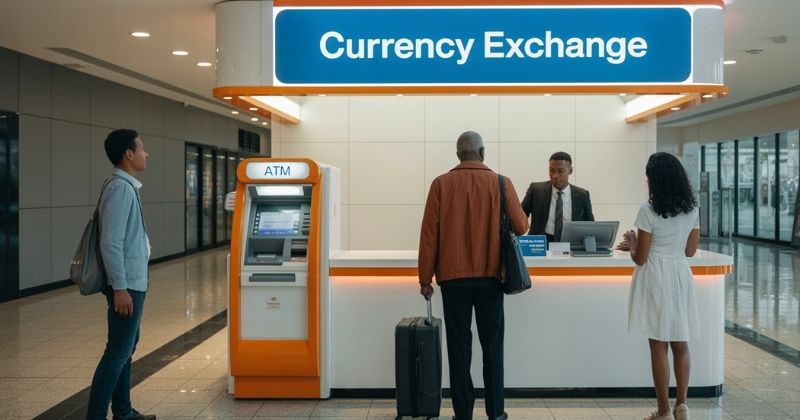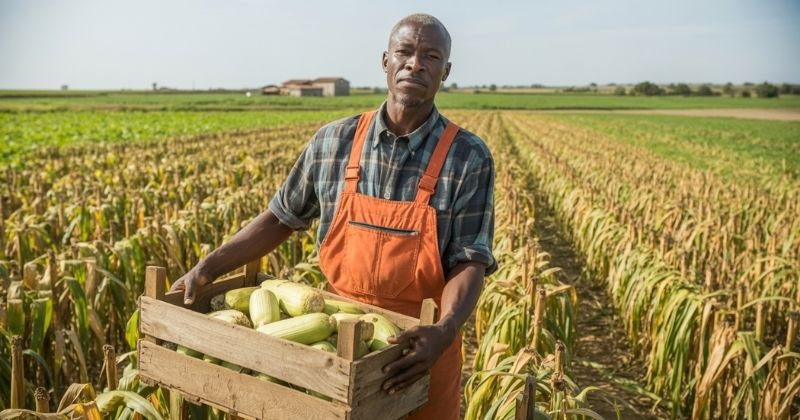
By midday on Wednesday, the South African rand was holding its ground at approximately R17.83 to the US dollar. It continued to trade within a narrow and stable range between R17.75 and R18.05. This consistent performance was noted by Andre Cilliers, a Currency Strategist at TreasuryONE. Earlier in the day, Bianca Botes, Director at Citadel Global, observed that the currency was sitting at R17.85, suggesting limited fluctuation throughout the morning session. This trading behaviour signals a cautious yet confident stance from investors, who are clearly waiting for stronger economic signals before shifting positions.
Key Takeaways
- Rand Remains Stable Below R18 Despite Weak GDP: The South African rand continued to trade in a tight range below R18 to the dollar, showing resilience despite the economy recording only 0.1% growth in the first quarter of 2025.
- Agriculture Cushioned the Economy Amid Broader Weakness: The minimal GDP growth was largely supported by strong performance in the agricultural sector, masking the continued underperformance in key sectors such as manufacturing and mining.
- Global Factors Outweigh Local Data in Currency Movement: The rand’s strength is being driven more by a weakening US dollar and geopolitical events, particularly developments in the US, rather than by South Africa’s domestic economic indicators.
About Arcadia Finance
Arcadia Finance connects you with safe, regulated loan options, without any application fees. Choose from 19 accredited lenders, all fully compliant with South Africa’s National Credit Regulator. Enjoy a secure and streamlined borrowing experience you can trust.
Subdued Economic Growth Fails to Weaken Rand
Despite the South African economy recording a modest growth rate of only 0.1 percent for the first quarter of the year, the rand remained resilient. It continued to trade beneath the R18 mark against the dollar, demonstrating limited reaction to the subdued economic data. This level of economic stagnation did not cause significant movement in the currency, as it appeared largely disconnected from the GDP outcome. Market participants seem to have brushed off the poor growth data, focusing instead on external global trends that currently carry more weight than domestic figures.

GDP Figures Offset by External Currency Drivers
According to Cilliers (Currency Strategist at TreasuryONE), the disappointing GDP numbers have not caused any notable depreciation in the rand. Instead, the currency appears to be more heavily influenced by external developments, particularly the weakness in the US dollar. While the GDP print released on Tuesday was largely uninspiring, several analysts remarked that it exceeded their initial expectations. This relatively better performance was attributed to a strong showing from the agricultural sector, which helped soften the overall impact of a sluggish economy. This trend further highlights the vulnerability of South Africa’s economy, which relies increasingly on the outperformance of a few isolated sectors to offset broader underperformance.
Agricultural Output Plays a Key Role in Supporting GDP
Nolan Wapenaar, Co-Chief Investment Officer at Anchor Capital, noted that earlier production and economic indicators had already signalled the likelihood of a weak GDP figure. He pointed out that agricultural output played a pivotal role in limiting the damage. This specific sector’s performance had a cushioning effect, helping to slightly uplift the otherwise poor national economic data. The robust performance of agriculture also masked the deeper frailty of core sectors such as manufacturing and mining, which have continued to underperform amid persistent power constraints and infrastructure bottlenecks.
Ever wondered how the history of the South African rand shaped today’s markets? This quick trip through its evolution, from the 1961 debut to apartheid-era sanctions and commodity-driven rallies, shows why holding below R18 is so remarkable.
Structural Challenges Still Holding Back Broader Growth
Maarten Ackerman, Chief Economist and Advisory Partner at Citadel, stated that the latest GDP results continue to reflect a pattern that South Africans have grown accustomed to. While a few sectors remain robust and continue to offer some support, the broader economy is still weighed down by deep-rooted structural inefficiencies. Without significant and well-coordinated policy reform, economic growth will likely remain sluggish. Ackerman warned that this stagnation will hinder efforts to reduce the high unemployment rate and tackle other pressing societal concerns. Investors are growing increasingly frustrated by the government’s slow pace of economic reform, particularly in areas such as energy policy, labour market flexibility, and public sector spending discipline.
Rand’s Stability Seen as Expected Market Reaction
Wapenaar commented further, stating that the rand’s muted response was largely in line with market expectations. Given that the data had already been priced in, there was little surprise or volatility in response to the release. The lack of surprise meant that the rand remained relatively unaffected by the figures. This also suggests that local financial markets have developed a degree of immunity to weak economic data, provided there are no major fiscal shocks or credit rating changes.
Stronger Rand Unlikely Without Fundamental Economic Change
Earlier in the week, Investec’s Chief Economist, Annabel Bishop, remarked that the rand is unlikely to return to its fair value of around R16 to the dollar unless there is a clear improvement in South Africa’s underlying economic fundamentals. The currency’s current value reflects the broader market’s assessment of the country’s economic trajectory and reform outlook. Until meaningful structural improvements are made, the rand may continue to drift in a holding pattern, driven more by international headwinds than local progress.
Inflation is no idle spectator as the currency wobbles, and in higher prices in South Africa and experts predict more to come we chart the surge in food, fuel and utilities and explain why the squeeze could tighten further.

Weak US Dollar Contributing to Rand’s Support
The rand’s relative strength has also been buoyed by the continued softness in the US dollar. Bishop had previously commented that this weakening of the dollar may be intentional, influenced by former US President Donald Trump’s trade policy manoeuvres. His unpredictable approach to tariffs and trade negotiations has resulted in erratic responses across global markets, indirectly affecting emerging market currencies like the rand.
Investors looking for safe havens have increasingly turned to riskier currencies like the rand, not out of confidence in South Africa, but out of disenchantment with the dollar’s volatility.
Tariff Hikes by US Add Pressure to Global Trade Sentiment
Trump’s latest action involved increasing tariffs on steel and aluminium imports from 25 percent to 50 percent. This move followed trade discussions involving leaders such as South African President Cyril Ramaphosa. According to a formal statement published on the White House website, the rationale behind this decision was to prevent such imports from threatening US national security. These sudden tariff hikes have added yet another layer of uncertainty to global trade, affecting export-reliant economies like South Africa and indirectly shaping currency valuations.
Global Distractions Reduce Impact of Local Economic Data
Wapenaar concluded by noting that the rand’s sustained performance is partly due to global financial markets being heavily focused on political developments in the United States. The ongoing events at the White House have drawn much of the attention, which means that local data releases such as South Africa’s GDP figures are having less influence than usual on the currency’s direction. With global investors obsessing over US policy moves, South African economic signals are being drowned out in a wider sea of geopolitical noise, rendering them temporarily irrelevant to traders.
Optimism around long-term prospects is increasingly backed by hard data. Another Significant Economic Gain for South Africa shows that recent improvements are not just sentiment driven but supported by tangible economic outcomes that strengthen confidence in the country’s growth trajectory.
Conclusion
Although South Africa’s economy delivered a disappointing 0.1% growth in the first quarter, the rand held firm beneath the R18 mark, bolstered by external factors such as a softer dollar and global market focus on US trade policy. Local data, while poor, had limited impact as it was largely anticipated, with agriculture being the lone bright spot. Unless domestic reforms are implemented to improve structural performance, the rand’s value will likely continue to depend more on global sentiment than on local progress.
Fast, uncomplicated, and trustworthy loan comparisons
At Arcadia Finance, you can compare loan offers from multiple lenders with no obligation and free of charge. Get a clear overview of your options and choose the best deal for you.
Fill out our form today to easily compare interest rates from 19 banks and find the right loan for you.


